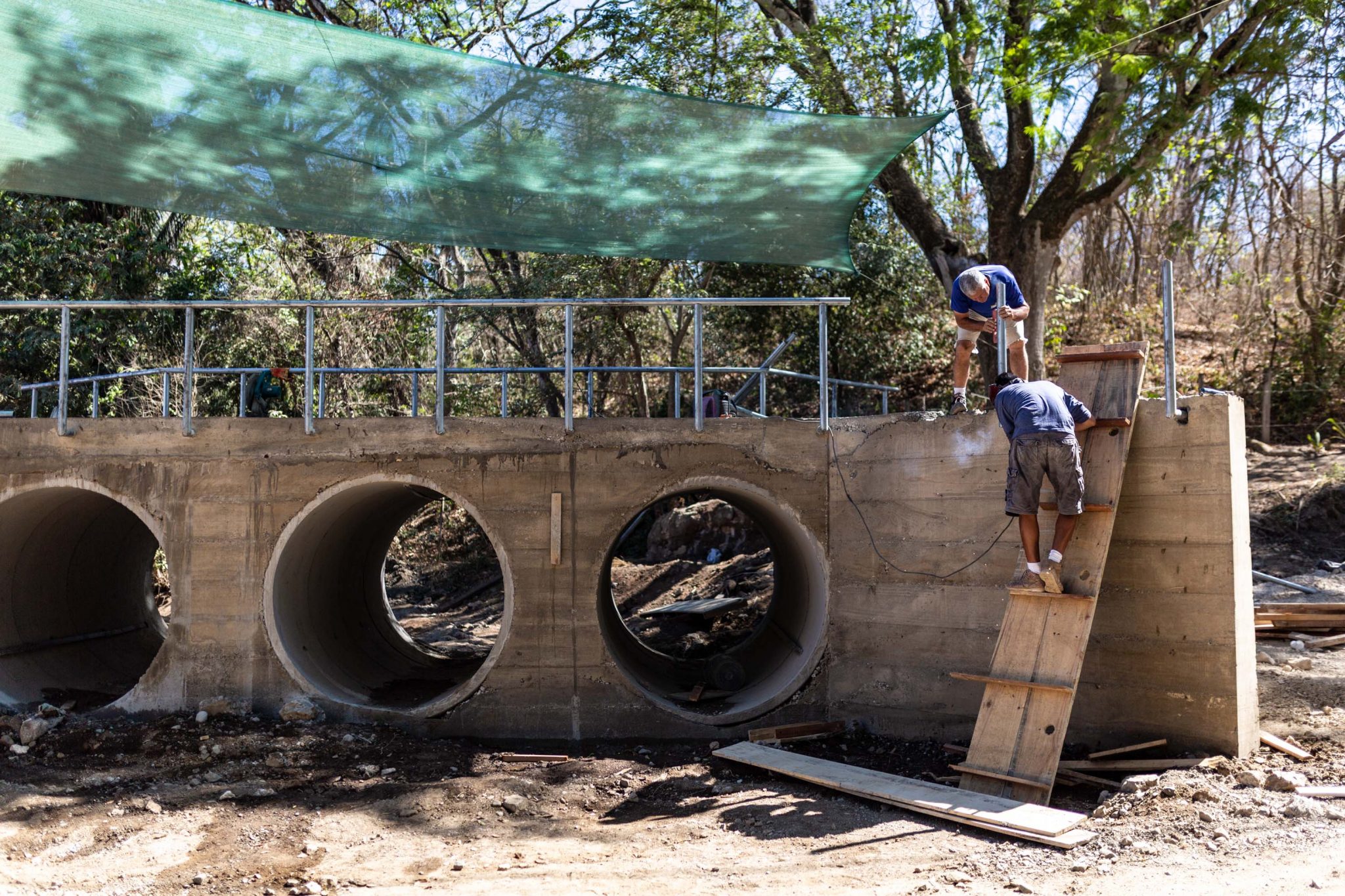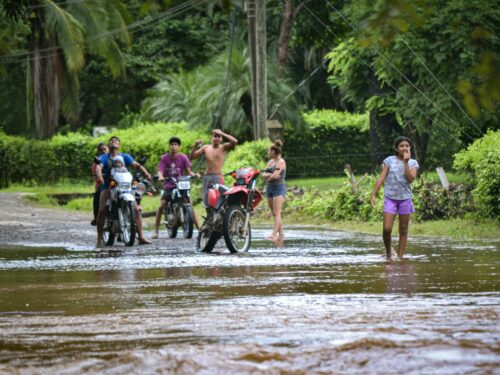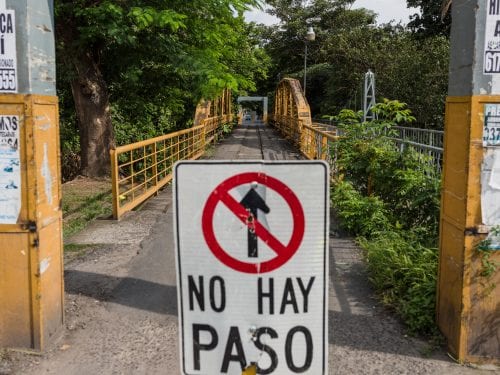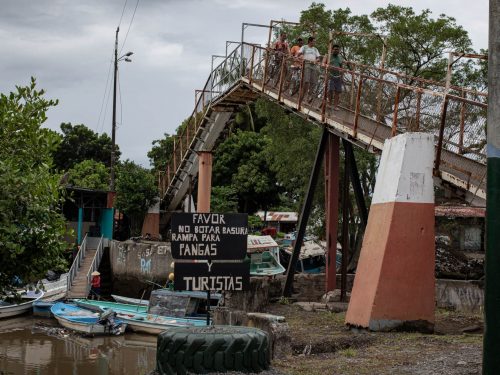
During the 2017 rainy season, when Tropical Storm Nate hit the country, Ostional, Santa Cruz was stuck without electricity for almost a week. Residents spent a couple of days without being able to leave the town in search of water, food or somewhere dry to sleep.
Resident Andy López remembers that the water level submerged the pedestrian bridge over the Quebrada Seca river near the border between Ostional and Nosara, Nicoya. He had to help residents transport a woman in a wooden stretcher so the Red Cross could pick her up.
“Our grandparents say the water had never risen so much. The current was so strong that it opened up its own pathway to the sea. It made its own river mouth,” Andy says.
The town doesn’t want to go through something like that again. Tired of waiting for a response from the government, a group of six residents took matters into their own hands and started to build a bridge of the Quebrada Seca river along National Route 160.
“We had to do it for the community because if someone got sick in the middle of the rainy season they would die here,” said Ostional resident Olivier Lopez, who has been coordinating construction and is also president of the town’s development association.
He, Andy and four other residents started to meet once or twice a week, starting two months ago, in the local Ostional guides’ booth to analyze the possibility of building it and then measure the area, make a list of materials and figure out how to find the money.
But they didn’t request a permit from the Ministry of Public Works and Transportation, the institution in charge of national highways. This puts them at risk of wasting the investment.
MOPT and National Highway Council regional director Alonso Mora told this newspaper that they will inspect the structure to determine the quality of the project and whether or not it should be demolished.
The initiative is good. They are solving a problem that has affected them for many years, one that we haven’t been able to take care of, but they should have followed a series of steps involving the ministry and Conavi so that the project complied with regulations,” Mora said.
Andy says they were aware they could run into problems with MOPT, but the job was urgent. “The rainy season will be here in a few months and we couldn’t wait any longer,” adding that the bureaucracy of state institutions would have slowed the project down.
Sitting on the bridge made of concrete and drains, Andy and Olivier recall how some people in town were skeptical of the idea that they could build a bridge 26 feet long and 10 meters high.
At the time this newspaper went to print, the bridge had already been built and is only missing the access ramps.
Hands at Work
It wasn’t easy for the community. Some of the members of the group knew how to do things, like Andy López, the owner of a construction company and who also worked for the Costa Rica Electricity Institute (ICE).
They got their hands on a bridge design that included all the specifications to build it and they adapted the measurements to what was needed for the Quebrada Seca river.
They said that they also consulted with engineering firms in the area, which told them that it was a good project that would help solve a need in the community. But there was one thing missing; the money.
No one was going to deposit a penny in someone’s individual account, so we used the account for the Ostional Local Guides Association in order to guarantee that we wouldn’t touch the money and the association’s treasury would be in charge,” López said.
They drafted a letter that they started to distribute in person and via Whatsapp to businesses, transportation companies, hotels, local organizations, foreigners and locals.
One of the donors, Mike Cothran, who owns a real estate development in Ostional, collected money with his clients and contributed ¢3 millions ($5.000) to the project.
“When they told me that they wanted to build a bridge, I asked two questions: what will it be built out of and how wide will it be. Then they showed me the designs,” Cothran said. “(With the money) we tried to help the community in order to improve security and prevent people from crossing dangerous streams.”
Donations rolled in little by little and came in all forms, including money, machinery, material, and volunteers to build the bridge. “We were all interested in building a bridge, hotels and residents alike,” López said.
In total, the budget for the bridge was ¢14 million ($23,300) and they were able to collect it all. On Saturdays, around 30 residents, mostly construction workers, worked on the project for six to eight hours.
According to Andy and Olivier, the bridge can hold 80 tons of weight and is designed to withstand water rising past the structure.
The next step for this group of residents is to make a ledger of revenue and expenses and present a report to everyone who donated money.
“Everyone deserves to know that their money was well invested,” Olivier said, noting that being transparent will encourage people to keep donating since they are already thinking about their next project: a bridge over the Ostional River.
“Our goal is to build the next one, but we can’t do it alone. The government says the same thing they always do, that they are going to help us and then they never to. We want people to see that we can do it if we have they give us the materials,” he said, sitting proudly on the bridge, which looks like a dream come true.








Comments